Due to integration requirements, hybrid vehicles are the most complex systems for design, manufacture, and maintenance. Robust design methods provide the architecture for designing reliable hybrid vehicle systems.
Electric vehicles were developed in the past to address higher fuel costs and increasing exhaust emissions. However, their development has been plagued by limited travel distances and lack of support infrastructure (ie, charging stations). The advanced nature of hybrid vehicles lies in the conversion bridge between the internal combustion engine and the electric vehicle. Hybrid vehicles are fuel efficient, and electric vehicles can reduce emissions, making them travel farther and making it easier to use the infrastructure of the internal combustion engine to get energy support.
In a hybrid vehicle, the powertrain includes components from an internal combustion engine and an electric vehicle. The list of system components includes: a battery pack, a motor/generator, and an internal combustion engine. The internal combustion engine provides electrical and mechanical forces to the system. The hybrid vehicle's powertrain is available in three configurations: a series configuration, a parallel configuration, and a series-parallel combination configuration. Regardless of the configuration, the reliable operation of the car depends on the successful integration of the powertrain components.
Electromechanical systems
Both standard and hybrid vehicles rely on the integration of electrical, mechanical, and software technologies, and automotive electronics and software are increasingly used to control or replace mechanical work. The intersection of these three design disciplines has become mechatronics. Hybrid vehicles are at the heart of mechatronic design.
Combining these technologies into a standard car will face complex design challenges where electronic and software controls are used for non-powered applications. In the process of integrating non-powered automotive electronic source systems, the design of hybrid vehicles faces the same challenges, and the electronic and software control of automotive powertrains is more complex. Because of this integration requirement, hybrid vehicles are one of the most complex systems to be designed, manufactured and maintained.
As the complexity of cars increases, people are beginning to care about reliability issues. Therefore, designing a hybrid vehicle system requires a systematic, organized approach to development. To ensure system reliability, the organizational approach requires reliability issues to be considered as part of the design process from the outset. Robust design methods provide the organized architecture required to design a reliable hybrid vehicle system.
The Robust Design approach is an organized and proven development philosophy designed to provide system reliability. Robust design principles allow design teams to handle complex system integration problems in a repeatable process. As shown in the figure below, the system concept based on robust design inputs the signal and processes an appropriate response. However, in a typical environment, design changes can affect the performance of the system. The design team must implement control techniques to compensate for design changes.
The focus of the robust design process is to reduce the impact of design changes on system performance and reliability, which may come from inside or outside the design source, including component tolerances, manufacturing processes, user patterns, environments, and system aging. The change. Despite the wide variety of these changes, each of these factors can have a major impact on the reliability of the system. The main goal of the robust design process is to optimize system design in terms of performance, reliability, and cost while addressing the issues caused by these changes.
In a typical design flow, solving problems caused by multiple changes requires extensive testing. This means that once the system is designed, it must be prototyped and tested. A robust design flow requires testing multiple variables, which means building new prototypes and testing each variable. Obviously, the approach to implementing robust design using this design-prototype-testing process is too time consuming and actually expensive.
The solution is to transfer the design-prototype-test operation to the virtual world for simulation and analysis. This is the virtual prototype that is often said. Using modern design tools like Saber, design teams can design and build virtual prototypes of their systems and run multiple tests within the time and budget allocated to traditional design-prototype-test processes. Therefore, simulation and modeling are key requirements for achieving a robust design flow. 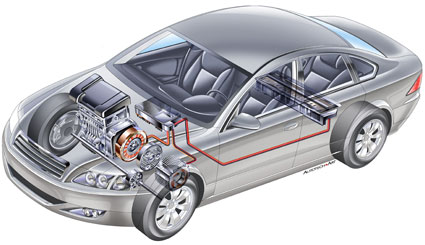
This article refers to the address: http://
Figure 1 The main transmission assembly system of a hybrid passenger car includes: motor/generator (front), controller (middle) and battery pack (rear)
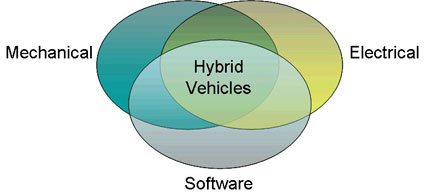
Figure 2 Hybrid vehicles rely on effective integration of mechanical, electrical and software technologies
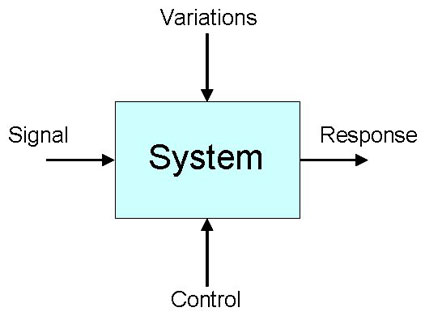
Figure 3 The general robust design system block diagram is based on the Taguchi method.
Design Flow
Robust design flow based on modeling and simulation must follow the system process. The key to this process is to determine:
- key performance metrics for the system;
- Model the system in a way that highlights these metrics;
- Verify metrics at every stage of the system development process;
The robust design flow has a basic development process that requires the simulation capabilities shown here.
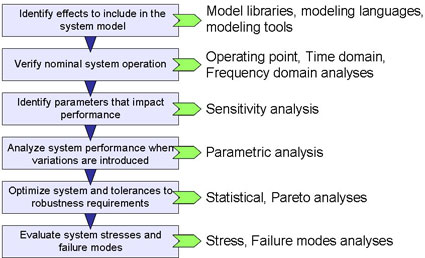
The effective robust design process in Figure 4 depends on the system development process and requires advanced simulation capabilities.
This robust design flow can be easily described using the development process of a hybrid vehicle system. Performance metrics are derived from design specifications. A typical hybrid vehicle design specification will contain several performance requirements. As an example, cars typically meet emissions, performance, and fuel economy requirements. Each of these requirements becomes a performance metric that must be analyzed during the design process. For the current discussion, fuel economy will be used as a key performance metric.
With selected fuel economy metrics, the design team must select or develop a simulation model to highlight the design variables that affect the standard. Because the robust design flow may be intensive simulation, the choice of model is to optimize simulation accuracy and simulation performance.
When developing a development model for a robust design process, the design team should use the hardware description language (HDL) to create the model. Using HDL allows the design team to better control model accuracy and performance, including in different design abstractions. The ability to create models at the level. Synopsys' MAST language is the de facto standard used by the automotive industry to model hybrid systems; VHDL-AMS is another optional modeling language that has recently been standardized by the IEEE. Both languages ​​are supported by the Saber emulator.
Verify the work of the rated system
Once the modeling of the system is completed, the focus can be turned to analyzing fuel economy. The next step is to verify the fuel economy performance of the hybrid vehicle. Rated analysis shows the fuel economy of the best case designed under ideal conditions. The design is analyzed using standard operating point, time domain, and frequency domain analysis. The fuel economy results from the nominal analysis become the performance benchmark for other steps in the robust design process.
Identify parameters that affect performance
Hybrid vehicle models should include key variables that affect fuel economy. These variables are chosen by the design team based on their knowledge of the automotive system. Once the variables are selected, the design team identifies the variables that have the greatest impact on the fuel economy of the car.
Sensitivity analysis is the most effective way to analyze the parameters that have the greatest impact on the system. Sensitivity analysis can be used to analyze the fuel economy of a car as a function of system parameters. These parameters and their impact on the performance of hybrid vehicles are the focus of other design processes.
Analyze system performance based on variables
After identifying the key parameters, the next step is to examine the effects of these changes on the fuel economy of hybrid vehicles. Based on the understanding of the system, the design team established a numerical range of key parameters and set simulation instructions for scanning the entire range of values.
The range of variation of the scan parameters is an important capability. The design team must set up the simulator to automate it in a series of loops to scan the range of design parameters. This allows the simulator to cover every possible combination of parameters, allowing the design team to fully understand the impact of fuel economy. The goal of parametric analysis is to establish a range of values ​​for each of the key system parameters. This range of values ​​is then converted to a nominal value for statistical analysis plus tolerance.
Optimize system performance
At this stage, the design team should have a good grasp of the impact of system parameter changes on fuel economy, implement fuel economy compensation techniques, and determine which group to choose for optimal system performance. The next step is to verify the fuel economy of the car based on a combination of all possible design parameter values.
This is achieved using statistical analysis. Based on the results of the parametric analysis, the design team assigns the tolerances to the identified key parameters in the system. The list of key parameters should include those found in the sensitivity analysis. The goal is to verify fuel economy because design parameters are randomly variable within tolerances and combined with other parameters in the design. The end result should be a hybrid vehicle with optimized fuel economy over a wide range of system variables.
Evaluate system pressure and failure modes
The final step in ensuring system reliability is to analyze the stress on the system components and then examine what happens after the critical components in the system fail.
Pressure analysis is used to analyze the effects of pressure on hybrid vehicle components, and the design team applies the maximum pressure rating to these components and reduces the rating where needed. The simulator uses this information to determine how far away the component is working from "maximum" or "lower rating"? The design team can then take the right action where it is needed.
The role of failure mode analysis is to verify the performance of the system because the critical components are initially set to failure mode. The design team must first select an acceptable range for fuel economy measurements. Then, select key components to invalidate during the analysis and define the failure mechanism of the component.
Failure mode analysis then runs a series of analyses that cause the selected component to fail. Fuel economy is monitored during the analysis to see if the system – even after a failure – continues to execute within the indicator. The end result is an analysis that details the failure of the component and whether it passes the fuel economy measurement.
Summary of this article
Hybrid vehicles are a new and evolving, complex transportation system that takes full advantage of mechanical, electrical, and software technologies to make system integration more challenging, and the design process is much more complex than traditional cars. The high complexity of hybrid vehicle systems has led to more and more reliability issues. Design teams need an organized design approach to address the complexity of these systems and ensure that reliability goals are met.
Robust design methods provide a systematic design approach to solving complex system design problems. Combining robust design principles with virtual prototyping practices, including modeling and simulation, gives design teams a powerful tool to optimize the performance, reliability, and cost of hybrid vehicles. In order to build a robust design workflow in a hybrid vehicle development project, the design team will use advanced simulation tools like Synopsys Saber. With these tools, design teams can analyze and validate the performance of complex hybrid vehicle systems.
Wireless Ir Dimmer Sensor also can be called wireless remote controlling infrared Led Ir Sensor . The wireless smart driver connect the control box directy, then we can use Wireless Ir Dimmer to control the light. Their communication is by 2.4G.
Description of Wireless IR Dimmer
Replaceable battery operate
IR within 3years standby
PIR/Touch with 10years standby
More than 10000 times operate
Wireless switch
Easy for installation
Touch dimmer, PIR senor, IR on/off sensor, Ir Dimmer Sensor, Ir Door Sensor available.
Controlling the LED light smartly and wirelessly.
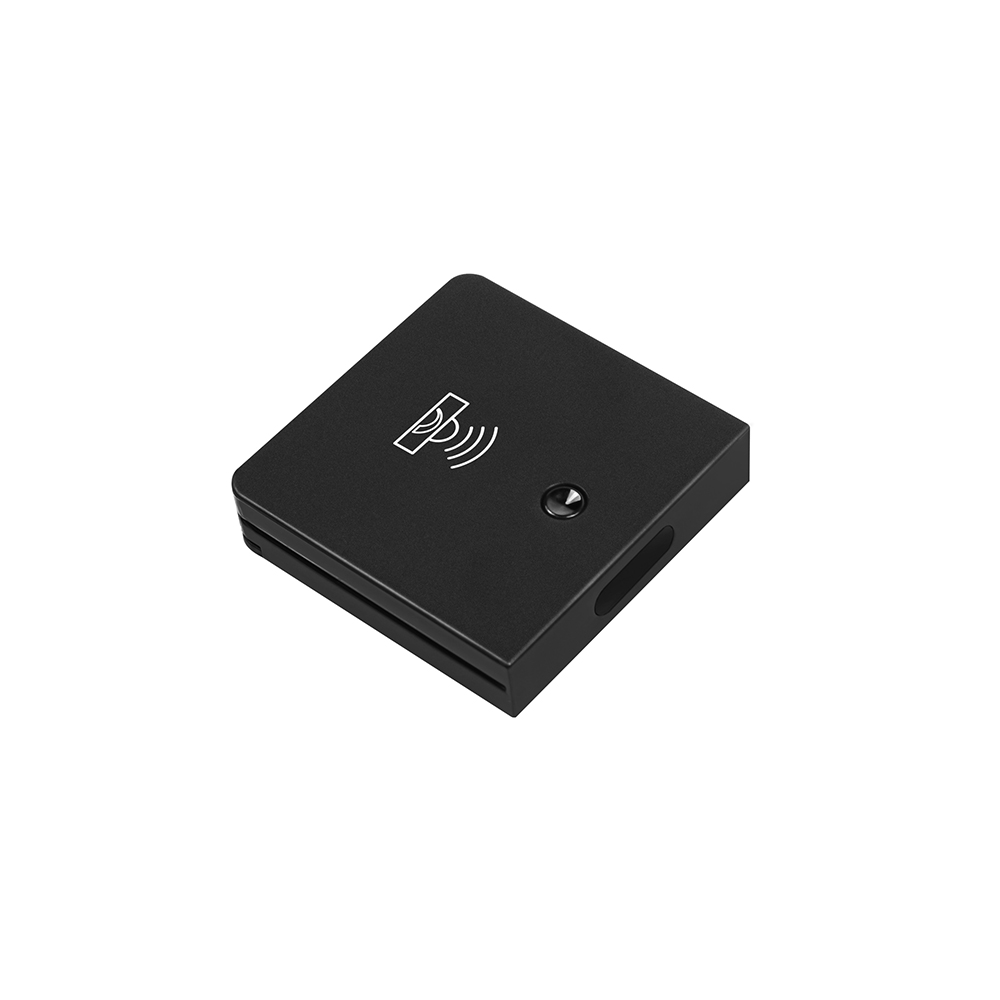
Wireless IR Dimmer Sensor
Wireless Ir Dimmer Sensor,Ir Dimmer Sensor,Led Ir Sensor,Wireless Ir Dimmer
Shenzhen Jedver Smart Lighting Co., Ltd. , http://www.jederwell.com